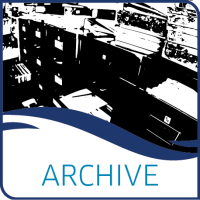Please note that this dataset was updated.We strongly recommend using the more recent version which can be found at https://doi.org/10.7489/12324-3
Dataset for Marine Scotland Monitoring Project. Contains positional data and items per km squared sea surface and per cubic metre of seawater. Also contains raw counts of microplastics per sample. Will be updated annually
Data and Resources
| Field | Value |
|---|---|
| Publisher | |
| Modified | 2023-03-09 |
| Release Date | 2021-02-22 |
| Frequency | Annually |
| Identifier | 8e1d07fd-57c1-4e81-96dc-54a7e3450c0c |
| Spatial / Geographical Coverage Area | POLYGON ((-1.5380859375 55.840626886364, -4.0869140625 54.536222879457, -7.119140625 55.741800939759, -15.99609375 57.031015892058, -15.6884765625 58.369317032861, -4.7021484375 61.240513683747, 1.1865234375 61.261650157058, 1.1865234375 56.52541201888)) |
| Temporal Coverage | 2013-04-01 |
| Language | English (United Kingdom) |
| License | UK Open Government Licence (OGL) |
| Data Dictionary | Samples were collected using Marine Scotland Science protocols and SOPs. Sea surface water samples were collected with a 335 µm neuston net mounted on a catamaran swimmer body (Neuston Net acc. to David/Hempel Model 300) from January 2014 up to and including January 2020 using Marine Scotland Sciences’ research vessels MRVs Scotia and Alba na Mara and the Scottish Environment Protection Agency vessel the RV Sir John Murray. The primary purpose of these surveys is to collect water, sediment and fish samples for nutrient, chemical and biological effects monitoring. Piggybacking microplastic sampling on surveys with a different sampling purpose is the usual scenario, due to the expense of a dedicated survey and helps maximise the use of ship time. Towing times varied from 15 minutes to over 1 hour, depending on the available time and/or sea surface conditions. The average speed of the ship during towing was 5 knots (2.6 ms-1). Once towing was completed the net was rinsed into the cod end and the material in the cod end transferred to a sieve stack consisting of 5 mm and 125 µm aperture sieves and a base pan. The material was rinsed through the 5 mm sieve using fresh water. The material collected in the 125 µm sieve was examined and the microplastic particles collected and counted. Particular care was taken to check for microplastics adhering to larger material such as seaweed. The examination and picking of microplastics was carried out by two people, using a lighted magnifier, as a cross check that everything identified as plastic was collected. Potential microplastics were counted in categories – fibres, film, beads, nurdles, fragments, polystyrene and paint flakes. Although not included in this assessment material greater than 5 mm in its longest dimension was also collected and counted in the same categories. Post survey, a selection of microparticles were analysed by microscopy Fourier Transform Infrared Spectroscopy (microFTIR) to confirm that they were microplastics. Potential hotspots for microplastics were identified in the surveys. |
| Contact Name | Marine Scotland |
| Contact Email | |
| Public Access Level | Public |


